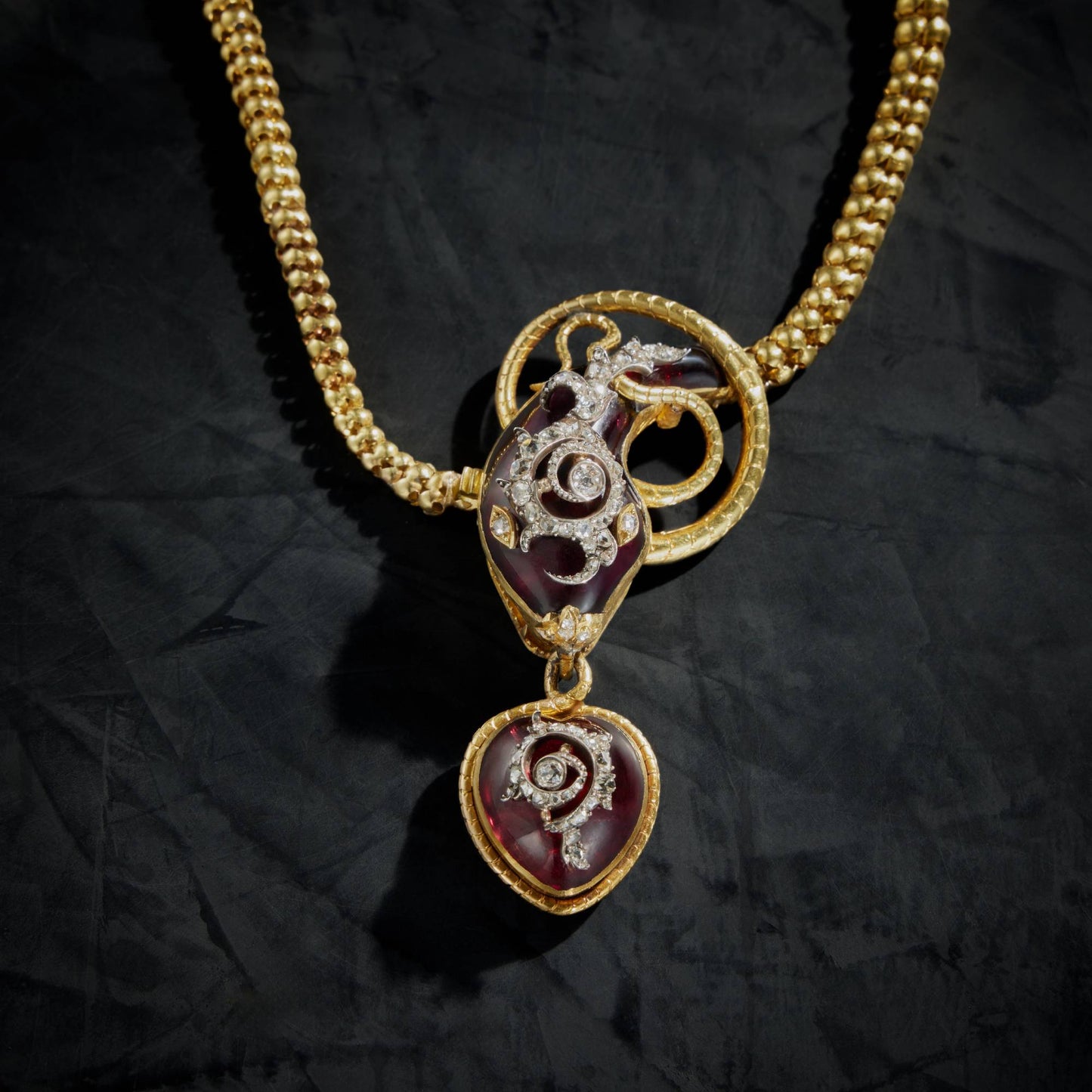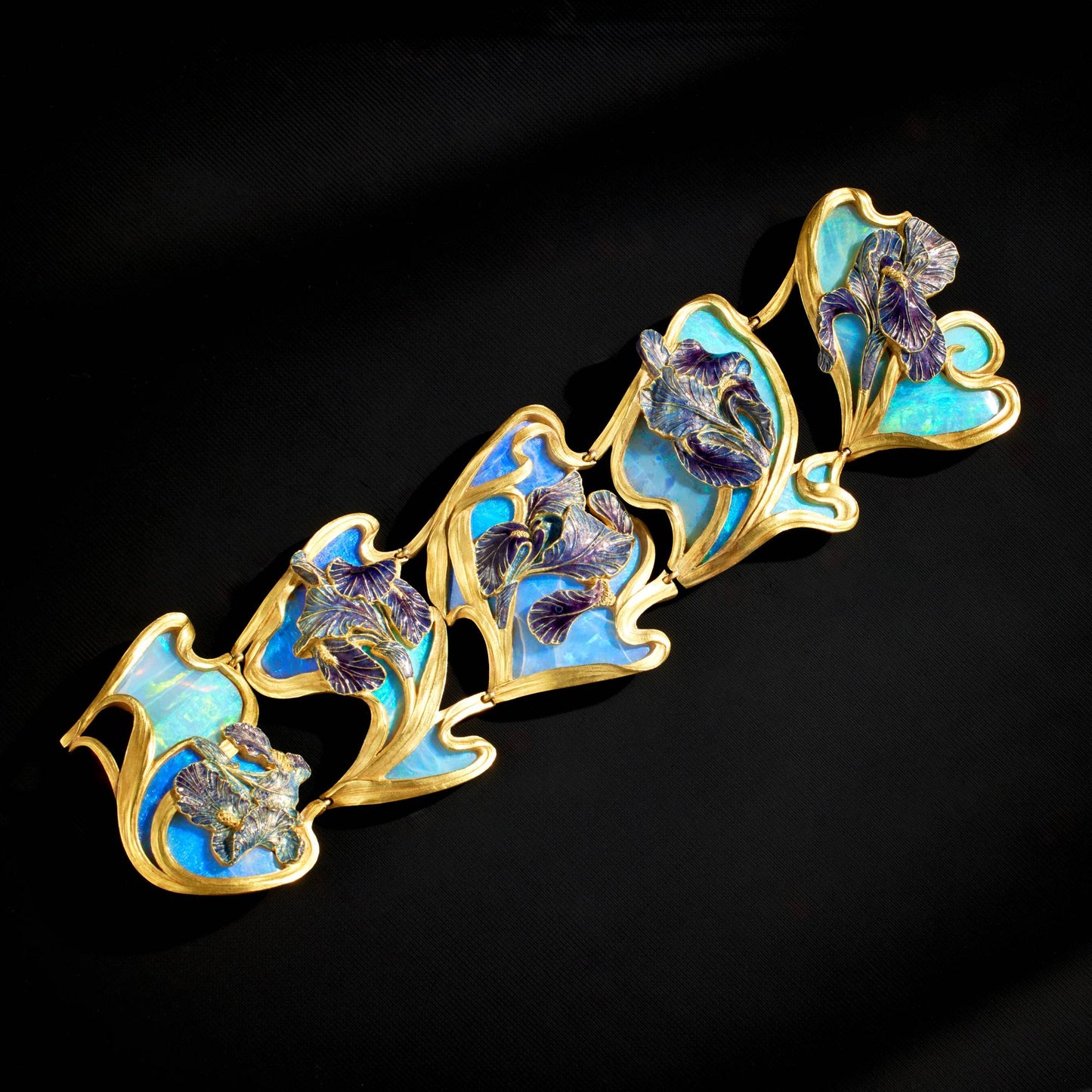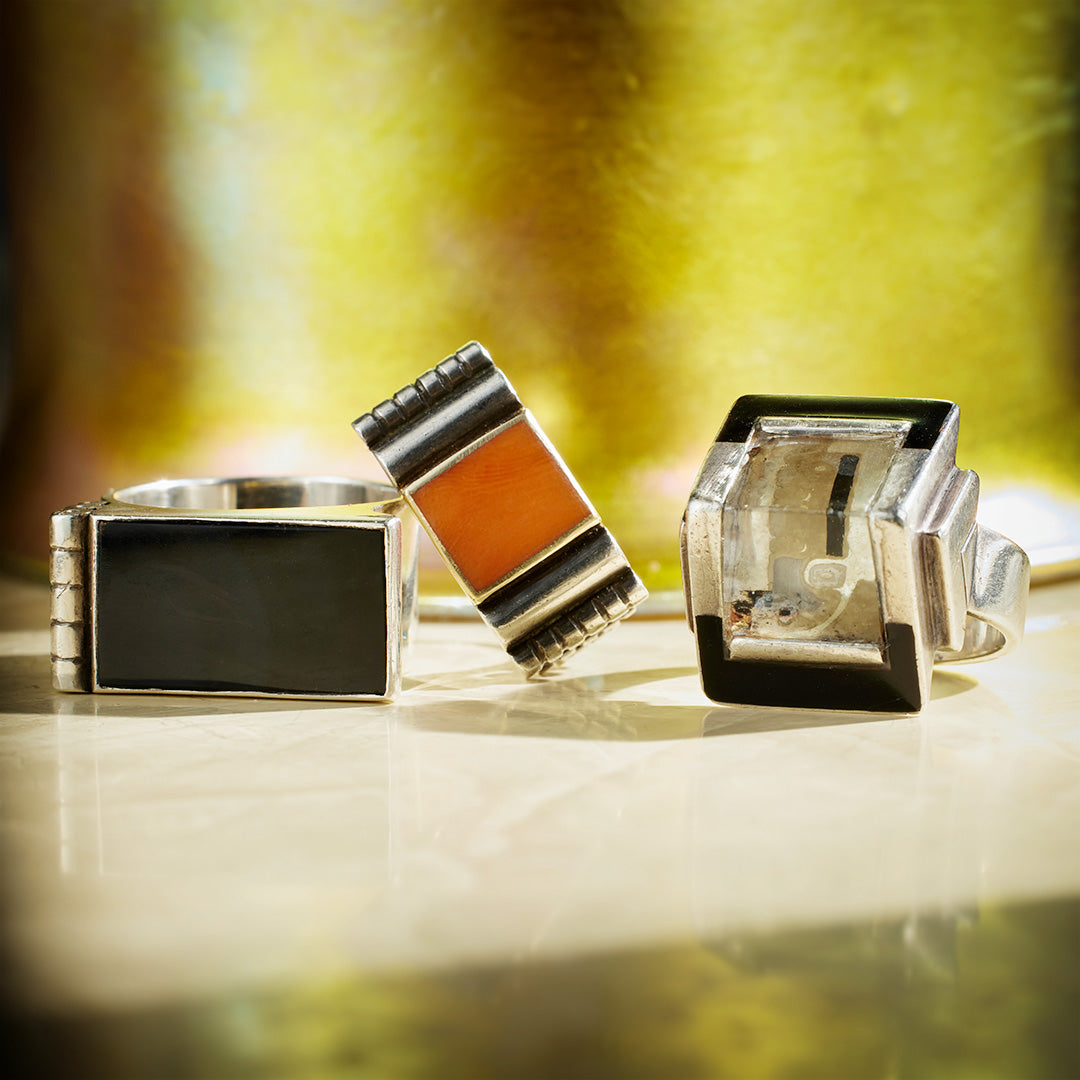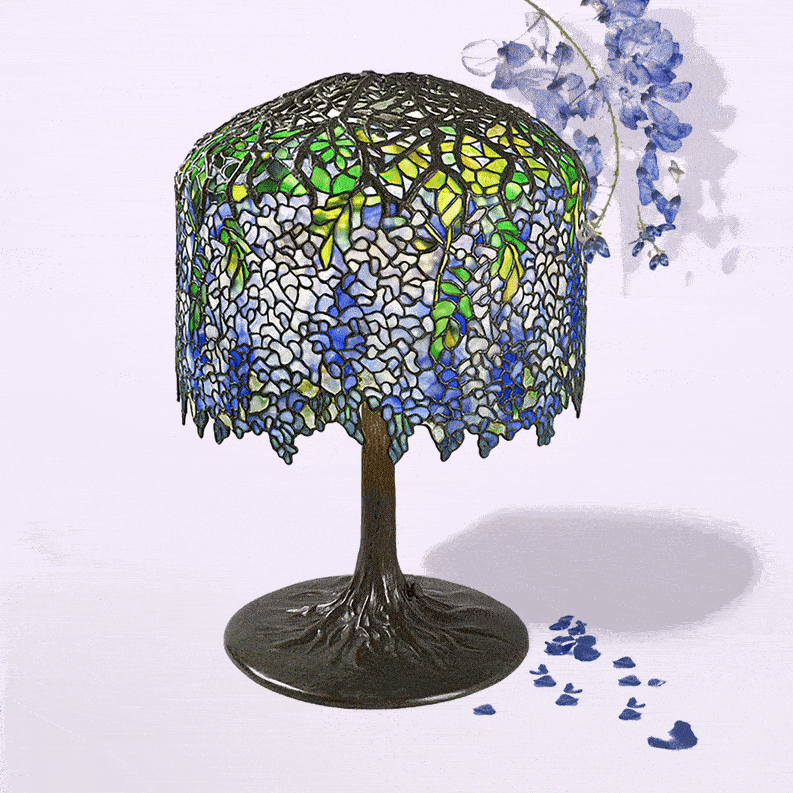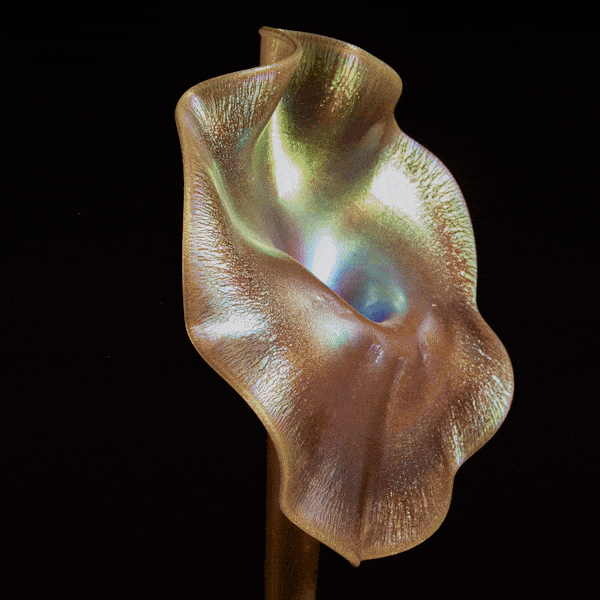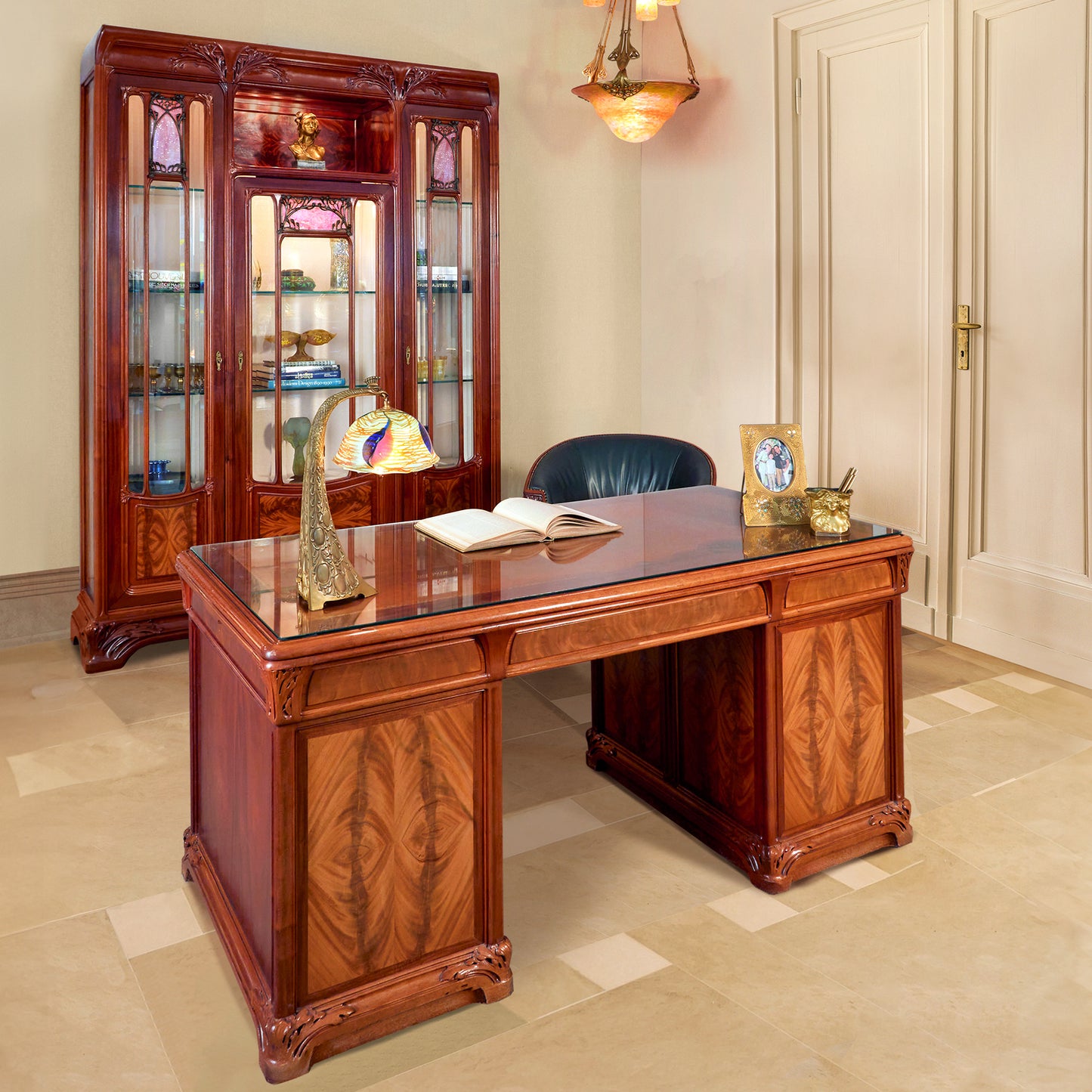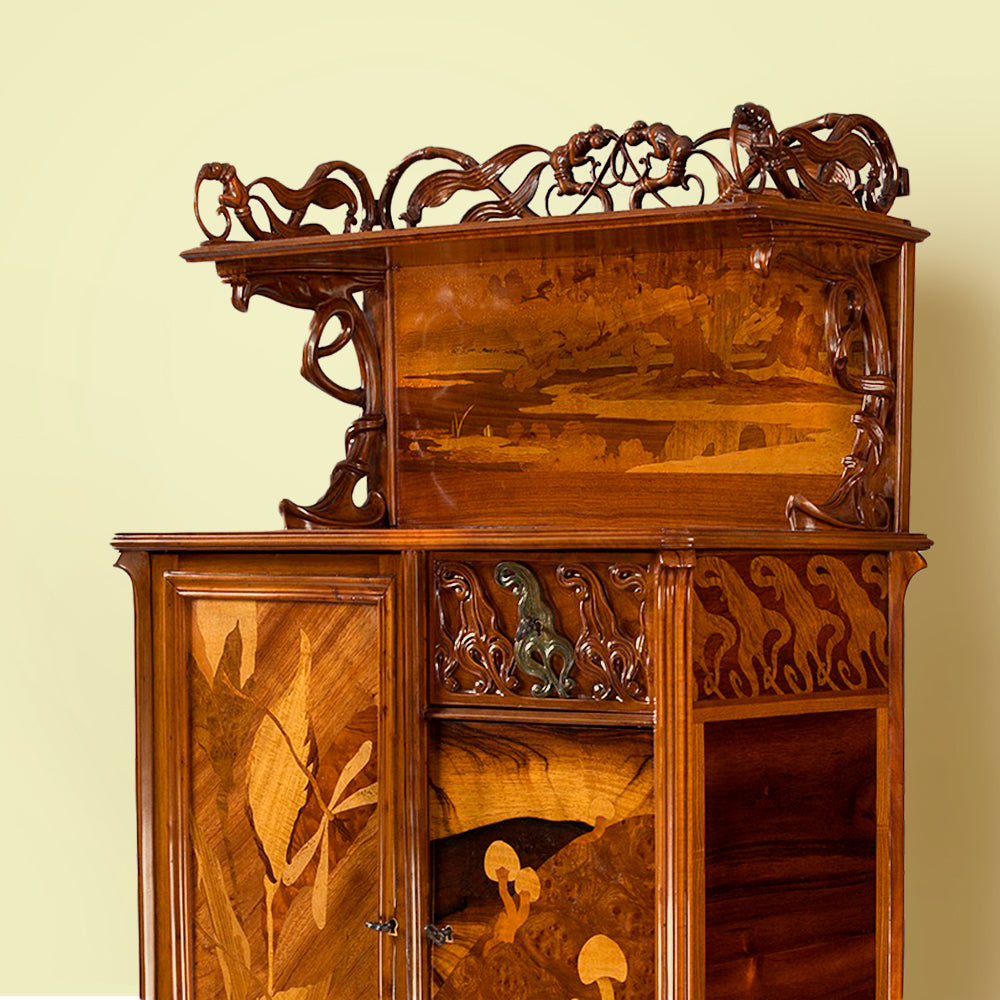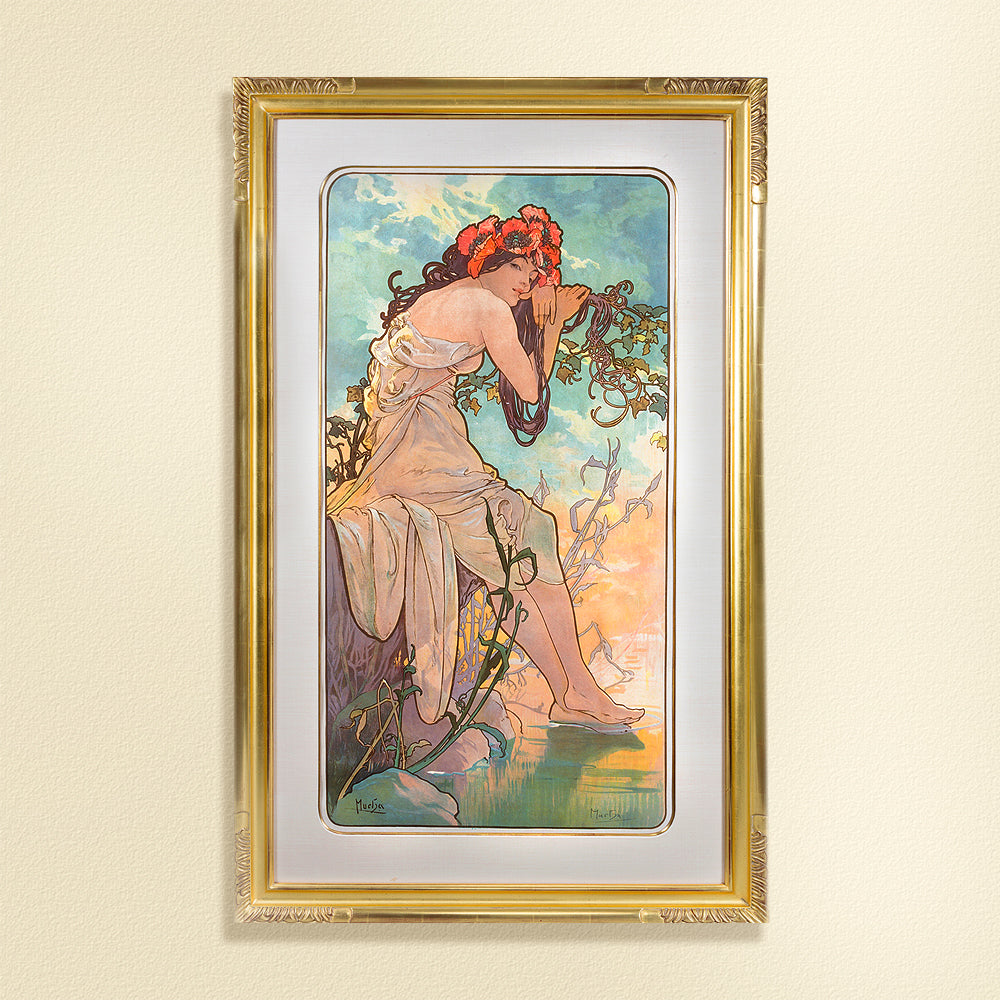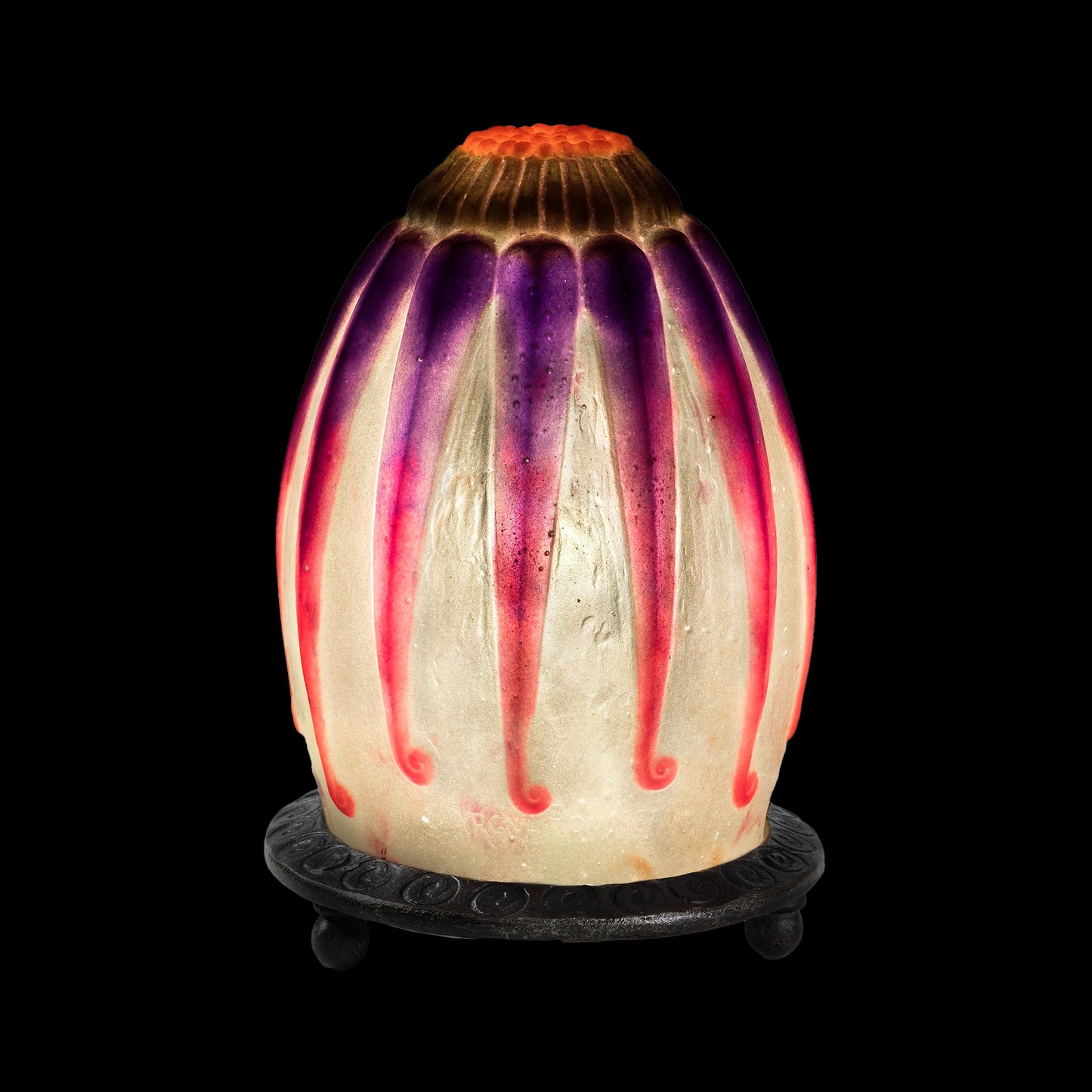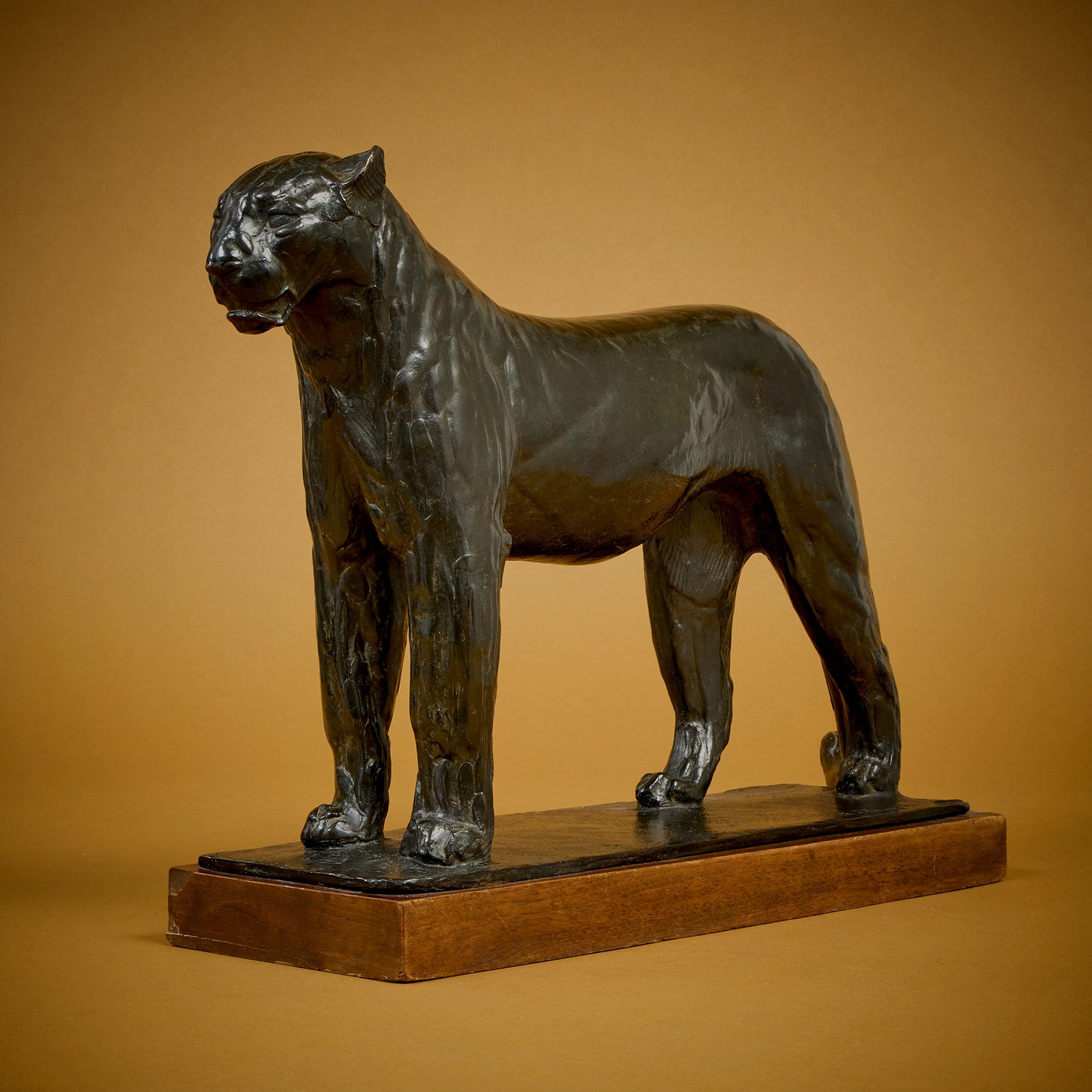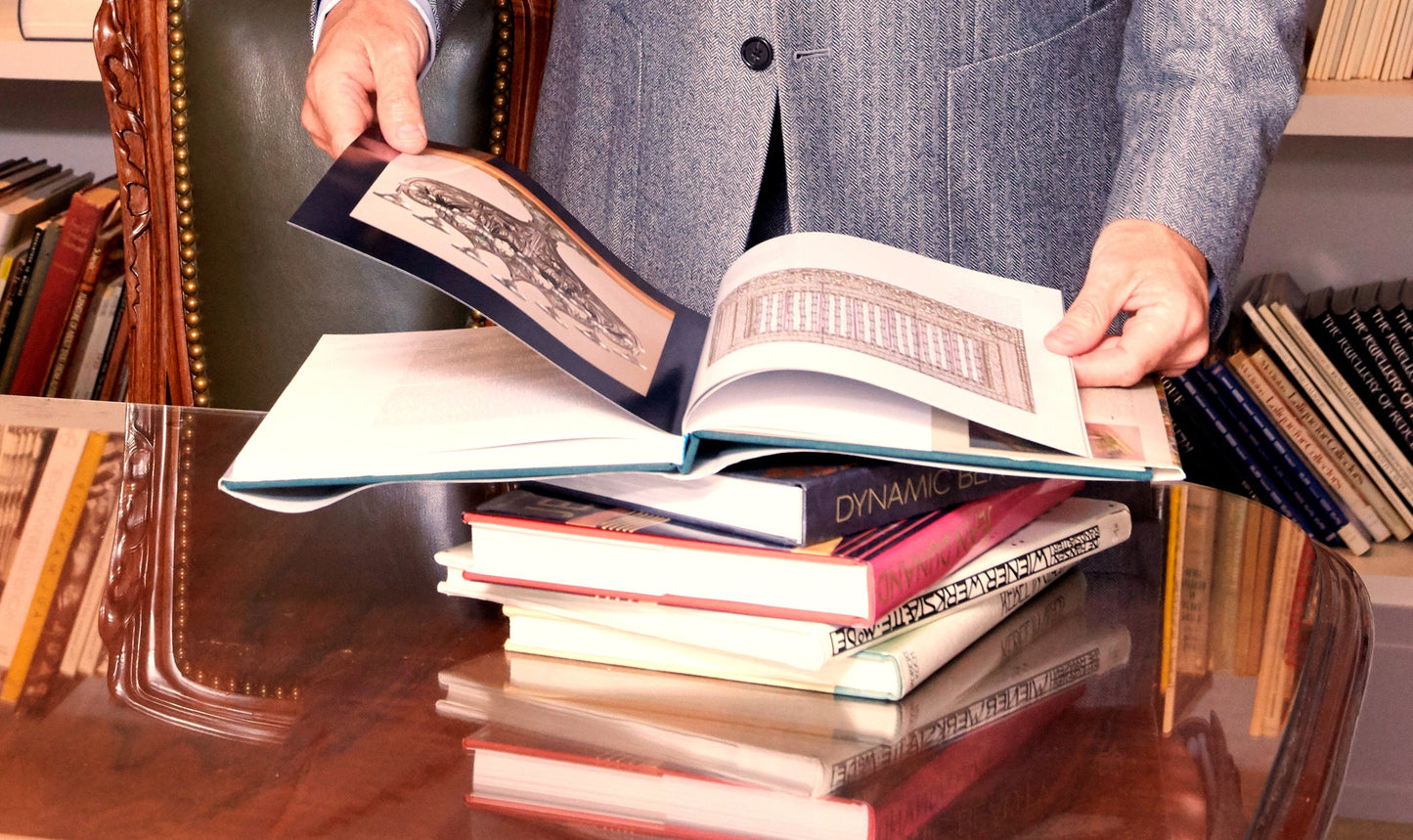We are delighted to present this exquisite Japonist pitcher by Edward C. Moore. A testament to Moore’s masterful craftsmanship, this remarkable piece seamlessly blends Eastern artistic influences with Western silversmithing traditions. Adorned with fluttering leaves, flapping wings, and splashing fish, this masterpiece stands among Tiffany & Co.’s most celebrated Japoniste designs, earning the grand prize at the 1878 Exposition Universelle. Its dynamic, asymmetrical composition, inspired by Japanese woodblock prints, beautifully captures a vibrant pond scene that gracefully wraps around its surface.
Edward C. Moore first presented silverwork for Tiffany & Co. at the 1867 Paris Exposition Universelle, marking his debut on the international stage. This event also introduced Japanese arts and crafts to France through the Meiji government’s exhibition of lacquerware, ceramics, woodblock prints, arms, armor, and textiles. Inspired by these works, Moore began incorporating Japanese techniques and motifs into his creations.

Right: Edward C. Moore Japonist Pitcher, 1867 Exposition Universelle
By the 1878 Paris Exposition Universelle, Moore’s Japonisme had reached its peak. Among his masterpieces was a Japonist pitcher, earning the Grand Prize in its category. Siegfried Bing praised Moore’s work, noting: “Although their concept was not inherently original—their decorative principles were directly borrowed from the Japanese—their borrowed elements were so ingeniously transposed to serve their new function that they became the equivalent of new discoveries.” The millions of visitors to the Exposition marveled at the grace, harmony, and restraint in Moore’s silverwork, exemplified by this pitcher.
Left: Dragonfly detail, Japonist Pitcher, 1878, Edward C. Moore, Tiffany & Co.; Right: Red Dragonfly (Akatonbo); Locust (Inago), from the Picture Book of Crawling Creatures (Ehon mushi erami), Kitagawa Utamaro, 1788, Metropolitan Museum of Art; Bottom Right: Dragonfly Sword Guard, ca. 1615–1868, Havemeyer Collection, Met Museum
The pitcher’s insect motifs are inspired by the woodblock prints of renowned Japanese artist Utamaro (1753-1806). It features two red dragonflies (Akatonbo) and a golden scarab beetle (kogane-mushi) on the handle, both drawn from Utamaro’s Picture Book of Crawling Creatures (1788). Ahead of his time, Utamaro had a deep fascination with nature from an early age. By depicting not only traditional subjects like dragonflies and fireflies but also the unassuming golden scarab beetle, he showcased a commitment to real-world observation rather than relying solely on artistic convention. The golden scarab beetle is often found on Japanese iris as it is on this pitcher. Utamaro’s bok became a model for artists in the centuries that followed.

In the early 1870s, Edward C. Moore acquired a Utamaro-inspired brush holder, which became a source of inspiration for the design on this Japonist pitcher. The dragonfly on the brush holder was crafted using the set-in inlay (suemon-zogan) technique with gilded details (iroe-zogan), both of which Moore incorporated into his Japonist silverware. According to Tiffany’s technical manual, the dragonfly’s wings were electrotyped with gold and the body with copper, both metals sourced from Lake Superior. Moore meticulously reproduced the intricate vein patterns of the dragonfly’s wings and the iris petals, capturing the precision of Japanese art.
Top Left: Utagawa, Koi (Carp), Uozukushi (Every Variety of Fish), published by Yamadaya Shojiro, ca. 1840-42; Bottom Left: Carp detail, Japonist Pitcher, 1878, Edward C. Moore, Tiffany & Co.; Right: Nihiki no koi (Two Carp), Katsushika Hokusai, 1831, Rijksmuseum
The pitcher’s textured effects, from the planished hammering mimicking a marshy mist to ripples accentuating the water surface, added depth and delicacy. An applied copper carp pierced the water’s surface, further enhancing the scene. Moore described planishing as creating “the appearance of Morocco... smeared to represent water. Fishes and water plants bring light to the surface, which is gilt in colors after engraving. It has a beautiful effect when viewed as water.”
Moore has designed the work with three carps jumping up and down out of the water in a rhythmic curve. The pitcher’s carp design draws on Hiroshige’s Uozukushi (Every Variety of Fish) series and Hokusai’s Nihiki no koi (Two Carp). The carp swimming upstream symbolizes determination, strength, and resilience in Japanese culture. Hokusai often paired koi and irises, reflecting themes of courage and triumph, particularly in Boys’ Day celebrations. The pitcher’s irises were inspired by Hiroshige’s and Hokusai’s prints. The irises reference Hiroshige’s Horikiri Iris Garden (1857), part of his One Hundred Famous Views of Edo series. Horikiri was renowned for its swampy terrain, ideal for cultivating the hanashobu iris, which gained popularity in Europe and America in the 1870s. This harmonious blend of irises, carp, and dragonflies embodies the balance of nature and human virtues central to Japanese tradition. Tiffany & Co.’s design library, which included several volumes of Hokusai’s works, was instrumental in inspiring the delicate yet dynamic motifs of this Japonist pitcher.
 Left: Iris detail, Japonist Pitcher, 1878, Edward C. Moore, Tiffany & Co.; Right: Horikiri Iris Garden (Horikiri no Hanashobu), No. 64 from One Hundred Famous Views of Edo, Utagawa Hiroshige, Woodblock Print, 1857, Brooklyn Museum
Left: Iris detail, Japonist Pitcher, 1878, Edward C. Moore, Tiffany & Co.; Right: Horikiri Iris Garden (Horikiri no Hanashobu), No. 64 from One Hundred Famous Views of Edo, Utagawa Hiroshige, Woodblock Print, 1857, Brooklyn Museum





 Left: Iris detail, Japonist Pitcher, 1878, Edward C. Moore, Tiffany & Co.; Right: Horikiri Iris Garden (Horikiri no Hanashobu), No. 64 from One Hundred Famous Views of Edo, Utagawa Hiroshige, Woodblock Print, 1857, Brooklyn Museum
Left: Iris detail, Japonist Pitcher, 1878, Edward C. Moore, Tiffany & Co.; Right: Horikiri Iris Garden (Horikiri no Hanashobu), No. 64 from One Hundred Famous Views of Edo, Utagawa Hiroshige, Woodblock Print, 1857, Brooklyn Museum